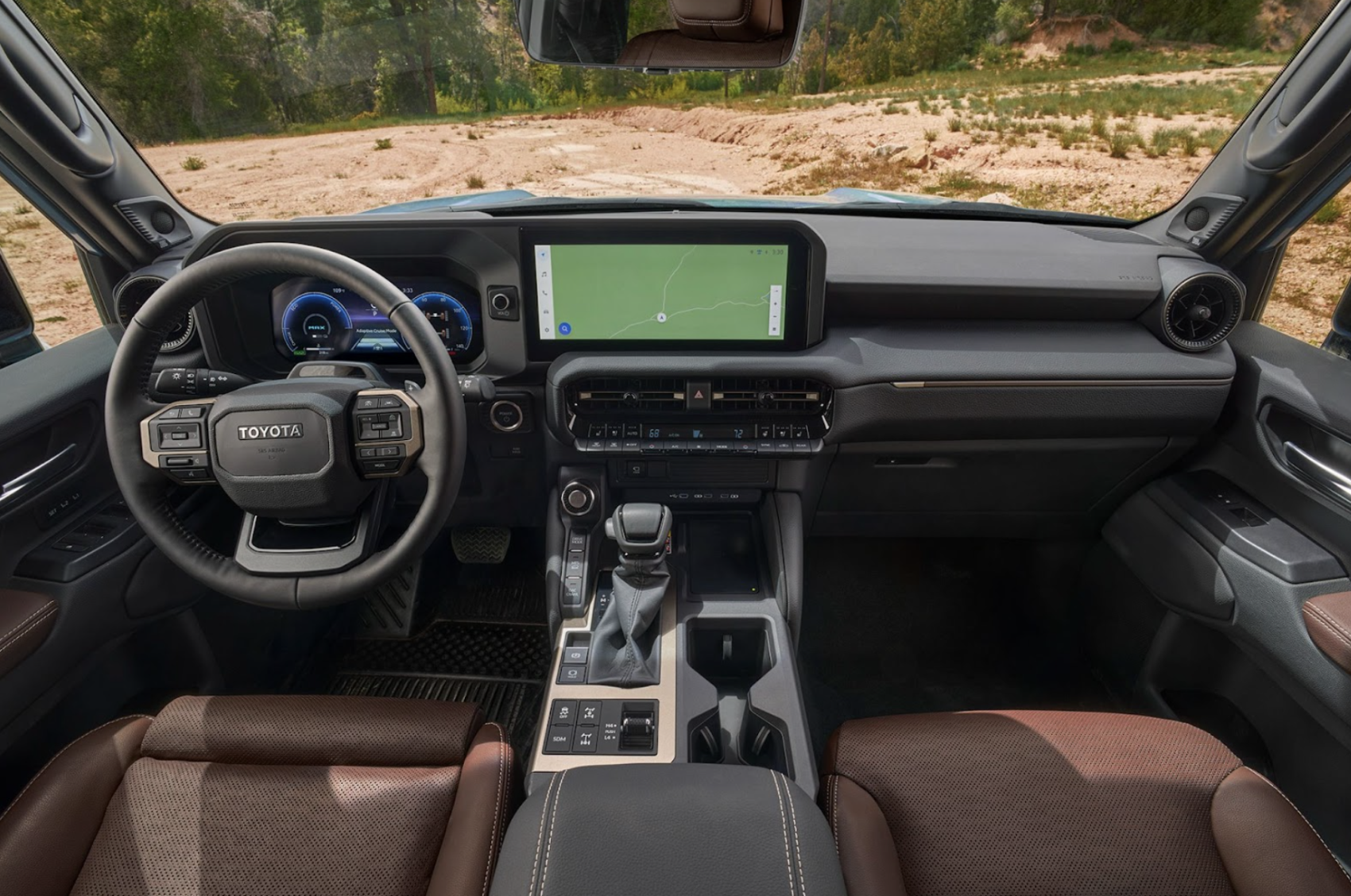The Toyota Land Cruiser brand holds significant value, thus the departure of the vehicle from the U.S. market in 2021 indicated an eventual return. However, the anticipation of its return did not account for the subsequent changes: a reduction in size, adoption of hybrid power, a notable decrease in cost, and a complete overhaul of its appearance. Presented below is a first glimpse at the forthcoming 2024 Toyota Land Cruiser.
Perhaps it would be appropriate to enclose “Land Cruiser” in quotation marks, as this recently introduced hybrid-powered body-on-frame SUV is only loosely connected to the renowned vehicle line that has become familiar in the United States. There may be concerns among certain individuals over the potential “lite” nature of this particular variant of the 300 Series Land Cruiser, as it is available in other markets. However, before addressing this matter, it is essential to provide an overview of this novel vehicle.
The initial point of focus is the appearance, and at first glance, the new machine, which is 1.2 inches shorter than its previous model, seems to embody the ideal vehicle for Land Cruiser enthusiasts. The design of the new Land Cruiser exhibits a robust and angular aesthetic, displaying evident influences from both the 60 and 80 Series models. The windscreen has a rectangular shape, while the A-pillars make contact with the roofline at a pronounced 45-degree angle. Additionally, the roof can be described as predominantly flat in nature.
There are two distinct headlamp designs that may be observed, one featuring a circular arrangement of Light Emitting Diodes (LEDs), while the other showcases a rectangular configuration. This appears to reference the resemblance between the initial 60 Series model, characterised by its circular lights, and the subsequent updated iteration (later known as the 62 Series) that replaced the circular lights with rectangular ones.
In the posterior region, the design maintains its angular characteristics, but with the inclusion of subtly curved rear haunches and vertically-oriented taillights, which appear to draw influence from the 80 Series.
The inside design maintains a rugged-retro aesthetic, featuring appealing circular HVAC vents that create an interesting contrast with the contemporary switchgear. Additionally, Toyota’s latest infotainment system, first introduced in the third-generation Tundra, is incorporated into the interior.
